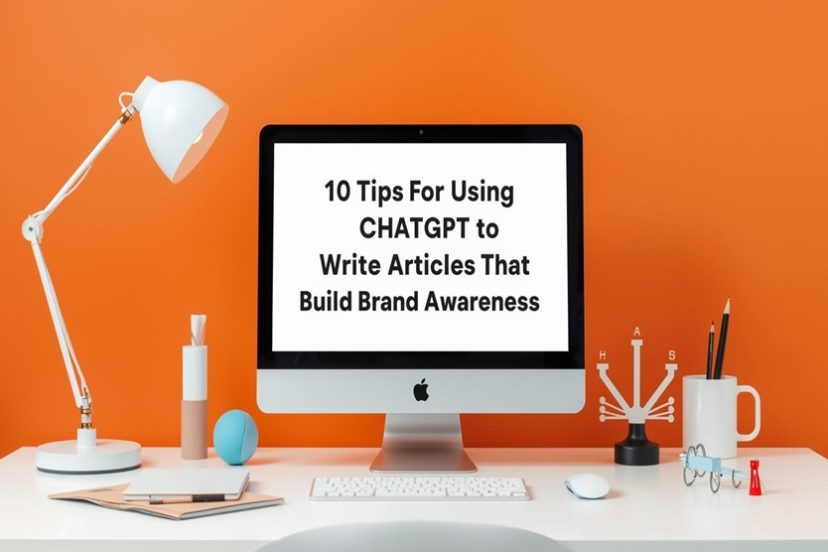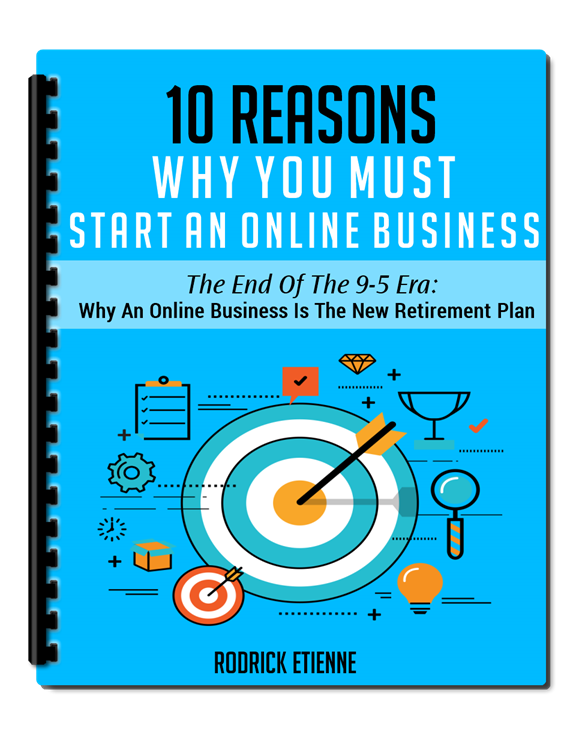In today’s fast-paced digital world, entrepreneurs and business owners face an overwhelming array of challenges. From…
10 Tips For Using ChatGPT To Write Articles That Build Brand Awareness

In today’s fast-paced digital landscape, content is king, but consistently creating high-quality content can be challenging.
Building brand awareness through written content is essential for entrepreneurs and business owners, yet it often feels time-consuming and resource-intensive.
Enter ChatGPT: a powerful AI tool that can help you create articles that resonate with your audience, position your brand as an authority, and drive traffic to your business.
Using ChatGPT to write articles doesn’t just save time—it can transform the way you approach content marketing.
From generating topic ideas to producing polished drafts ready for publishing, ChatGPT empowers businesses to maintain a consistent and professional online presence.
However, leveraging this tool effectively requires more than just typing in a prompt; it’s about strategy, creativity, and optimization.
I’ll walk you through 10 actionable tips for using ChatGPT to write articles that build brand awareness, complete with checklists, examples, templates, and best practices that you can start using immediately.
1)) Start With a Clear Goal and Audience in Mind
Before diving into content creation, it’s essential to define the purpose of your article. Who are you writing for? What problem are you solving?
How do you want readers to perceive your brand?
Answering these questions will shape the tone, structure, and messaging of your article.
Tips for Defining Goals and Audience:
-
Create a Reader Persona: Identify your ideal customer’s demographics, pain points, and motivations. This ensures your content speaks directly to them.
-
Set a Purpose: Are you aiming to educate, entertain, or persuade? Every article should have a primary goal aligned with your brand strategy.
-
Define Brand Voice: Decide whether your tone is professional, casual, playful, or authoritative. Consistency reinforces brand recognition.
-
Content Outcome Checklist: Make sure every article aligns with your goals: Increase traffic, generate leads, or boost social shares.
Example:
If your business provides digital marketing services, your persona might be small business owners struggling to generate leads online. Your goal could be to educate them on strategies while showcasing your expertise.
2)) Use ChatGPT for Research and Topic Generation
One of the biggest hurdles in content marketing is coming up with fresh, relevant topics. ChatGPT excels in brainstorming ideas and conducting preliminary research.
By using prompts strategically, you can quickly generate a list of article topics tailored to your audience.
Best Practices for Research with ChatGPT:
-
Prompt Example: “Generate 20 article ideas for entrepreneurs about using ChatGPT to write articles that increase brand visibility.”
-
Include Long-Tail Keywords: Target phrases like “using ChatGPT to write articles” to attract niche search traffic.
-
Validate Ideas: Cross-check the topics with trending searches using tools like Google Trends, SEMrush, or Ahrefs.
-
Content Gap Analysis Template: List your existing articles vs. new ChatGPT-generated topics to identify coverage gaps.
Warning: While ChatGPT is great for inspiration, always fact-check data or statistics before publishing.
3)) Craft Engaging Headlines That Capture Attention
A headline is the first thing readers—and search engines—see. It needs to grab attention, convey value, and include your target keyword naturally.
ChatGPT can generate multiple headline options, giving you the flexibility to choose or tweak the one that resonates best with your audience.
Headline Creation Hacks:
-
Prompt Example: “Suggest 10 click-worthy headlines for an article about using ChatGPT to write articles for brand awareness.”
-
Use Numbers and Power Words: Headlines like “7 Proven Ways Using ChatGPT to Write Articles Boosts Brand Recognition” perform well.
-
A/B Testing Ideas: Create 2-3 headline variations and test them on social media or email campaigns.
-
Headline Swipe File: Keep a list of tested, high-performing headlines for future reference.
4)) Optimize Article Structure for Readability
Even the best content can fail if it’s not easy to read. ChatGPT can help organize your ideas into a clear structure, using subheadings, bullet points, and short paragraphs.
Well-structured articles improve engagement, reduce bounce rates, and help search engines understand your content better.
Checklist for Readable Content:
-
Introduction: Hook the reader and present the problem.
-
Subheadings: Break content into digestible sections with keyword-rich headings.
-
Bullet Points/Lists: Highlight important information for skimmers.
-
Call to Action (CTA): Always guide readers on the next step, whether it’s subscribing, contacting you, or sharing your content.
Example:
Using ChatGPT, you can prompt: “Create an outline for an article on using ChatGPT to write articles that improve brand awareness, including 5 main sections and subpoints.” This generates a ready-to-fill structure, saving hours of planning.
5. Write High-Quality, Human-Like Content
A common misconception is that AI-generated content is robotic or unnatural. With the right prompts, ChatGPT can produce conversational, engaging, and informative articles that read like a human wrote them.
Tips for Humanizing Content:
-
Use First-Person or Collective “We”: Makes content feel personal and approachable.
-
Incorporate Examples and Stories: Illustrate points with real-world scenarios your audience can relate to.
-
Refine Tone Post-Generation: Edit for readability, clarity, and your brand’s voice.
-
Content Enhancement Prompt: “Rewrite this paragraph to make it more conversational and engaging for small business owners.”
Warning: Avoid over-relying on AI. Inject your insights and expertise to maintain authenticity.
6)) Optimize Content for SEO
Creating content is only half the battle; it also needs to be discoverable. ChatGPT can assist with SEO optimization by suggesting meta descriptions, headers, internal links, and keyword variations.
SEO Optimization Best Practices:
-
Keyword Placement: Include your target keyword naturally in the title, headings, and body.
-
Meta Description Swipe Template: Prompt ChatGPT to generate compelling 150–160 character meta descriptions for each article.
-
Internal Linking Ideas: Ask ChatGPT to suggest related articles to link for better site navigation and SEO.
-
Content Length Guidelines: Aim for at least 1,500–2,000 words for in-depth articles while maintaining readability.
Example Prompt:
“Create an SEO-friendly meta description for an article about using ChatGPT to write articles that build brand awareness.”
7)) Repurpose AI Content Across Channels
Once you have a full-length article, you can maximize its reach by repurposing the content across multiple channels.
ChatGPT can help convert a single article into social media posts, email newsletters, infographics, or video scripts.
Repurposing Ideas:
-
Social Media Snippets: Extract quotes or tips for LinkedIn, Twitter, or Instagram posts.
-
Email Newsletter Content: Turn key points into actionable advice for subscribers.
-
Infographic Drafts: Summarize data, steps, or tips in a visual format.
-
Video Script Template: Use ChatGPT to rewrite articles into scripts for YouTube or TikTok.
Resource Hack: Keep a content repurposing calendar to track how each article can be recycled across platforms.
8)) Edit and Proofread Strategically
Even the most polished AI content needs human oversight. Editing ensures the content is accurate, engaging, and aligned with your brand voice.
Editing Checklist:
-
Grammar & Spelling: Use tools like Grammarly or Hemingway for final polish.
-
Fact-Checking: Verify any statistics, quotes, or references.
-
Read-Aloud Test: Reading your article out loud helps catch awkward phrasing.
-
Consistency Check: Ensure consistent tone, style, and formatting across all articles.
Tip: You can also prompt ChatGPT: “Proofread this article and suggest improvements for clarity and engagement.” This reduces your workload while maintaining quality.
9)) Leverage Analytics to Refine Your Approach
Publishing an article is just the beginning. Monitoring performance helps you understand what resonates with your audience and improves future content strategy.
Analytics Best Practices:
-
Track Metrics: Monitor page views, time on page, bounce rates, and social shares.
-
Identify Top Performers: Determine which topics, headlines, or formats get the most engagement.
-
Iterative Optimization: Use insights to update existing articles or guide future ChatGPT prompts.
-
Content Improvement Worksheet: Keep a running list of content tweaks based on analytics for continual improvement.
Example:
If an article on using ChatGPT to write articles for brand awareness gets high social engagement, consider creating a follow-up piece with more in-depth examples or a downloadable template.
10)) Combine AI with Human Creativity
Ultimately, the key to success is blending AI efficiency with human insight. ChatGPT can handle repetitive tasks, research, and drafting—but your creativity, storytelling, and brand personality set you apart.
Ideas for Combining AI and Human Expertise:
-
Brainstorm With AI, Polish With Humans: Use ChatGPT for initial drafts and refine with your unique insights.
-
Experiment With Formats: Test case studies, how-to guides, listicles, and opinion pieces.
-
Collaborative Worksheets: Prompt ChatGPT to create checklists or templates, then customize them for your audience.
-
Warning: Avoid generic content. The more you personalize AI-generated articles, the stronger your brand voice becomes.
Conclusion
Using ChatGPT to write articles is no longer a futuristic idea—it’s a practical strategy for entrepreneurs and business owners looking to build brand awareness efficiently.
By following these 10 tips, you can leverage AI to generate high-quality content, optimize it for SEO, repurpose it across channels, and maintain a strong, consistent brand voice.
ChatGPT is a tool, not a replacement for your expertise. The combination of AI efficiency and human creativity can transform your content strategy, save valuable time, and help your business stand out in a crowded digital landscape.
Start experimenting today, track your results, and watch your brand visibility grow.





